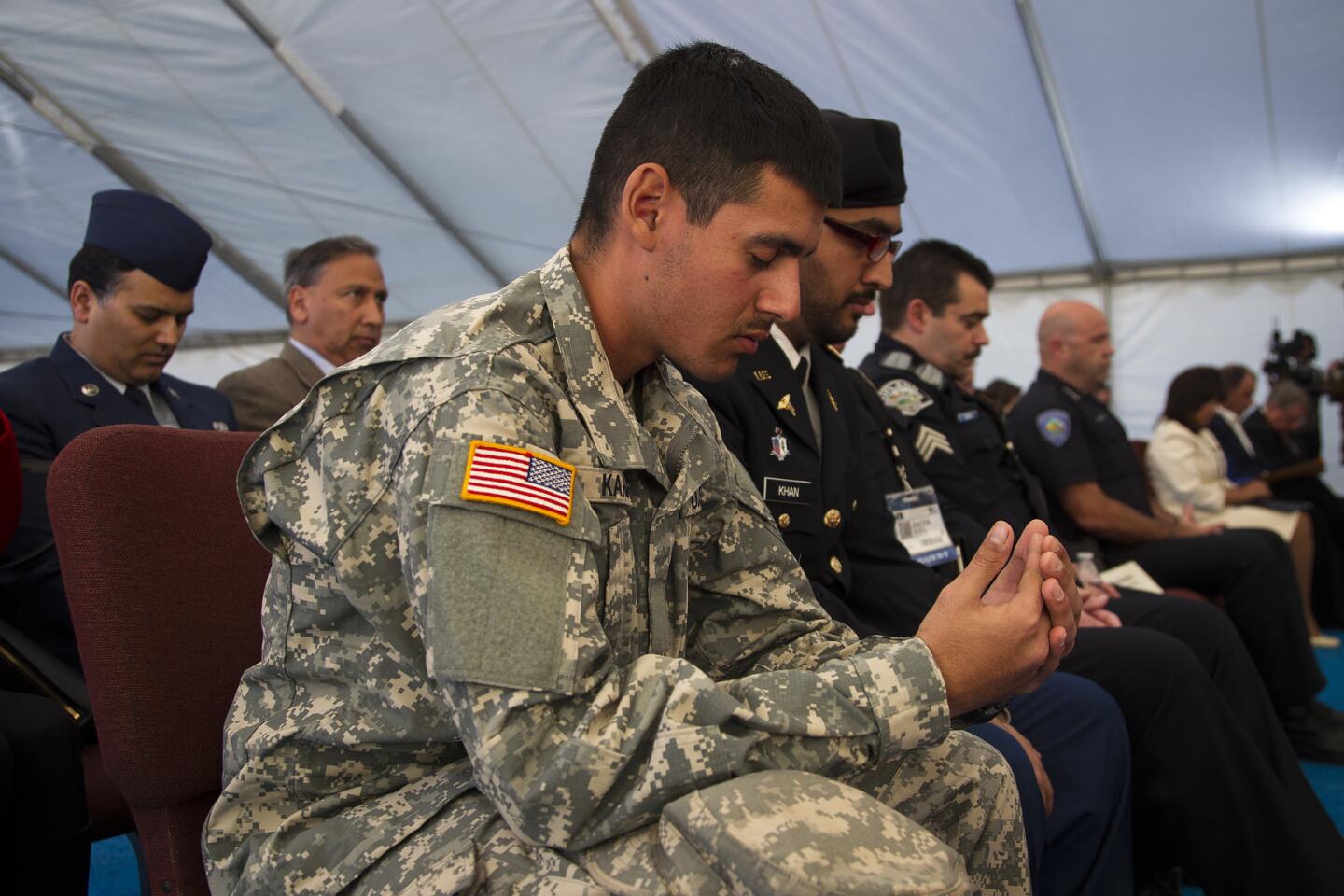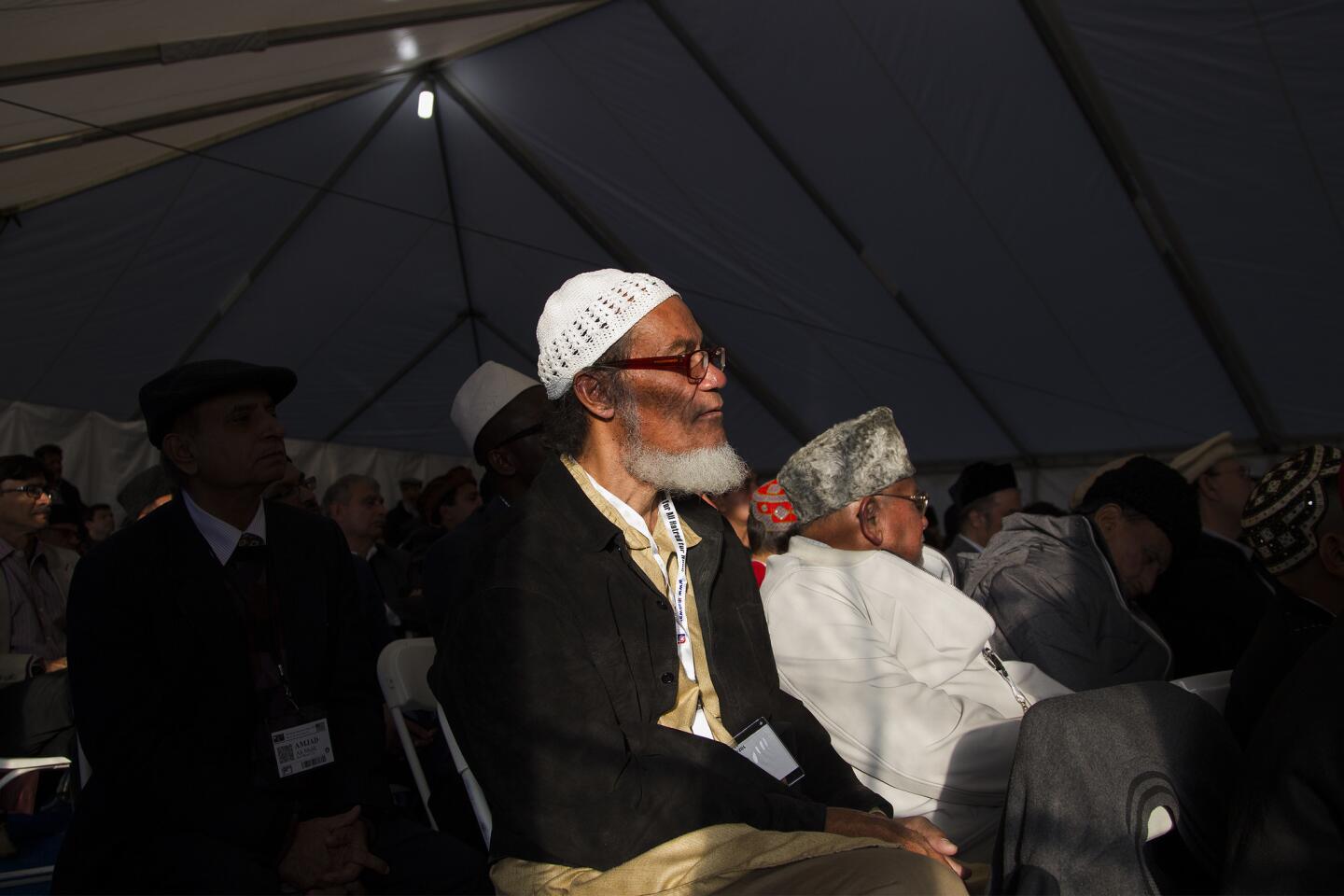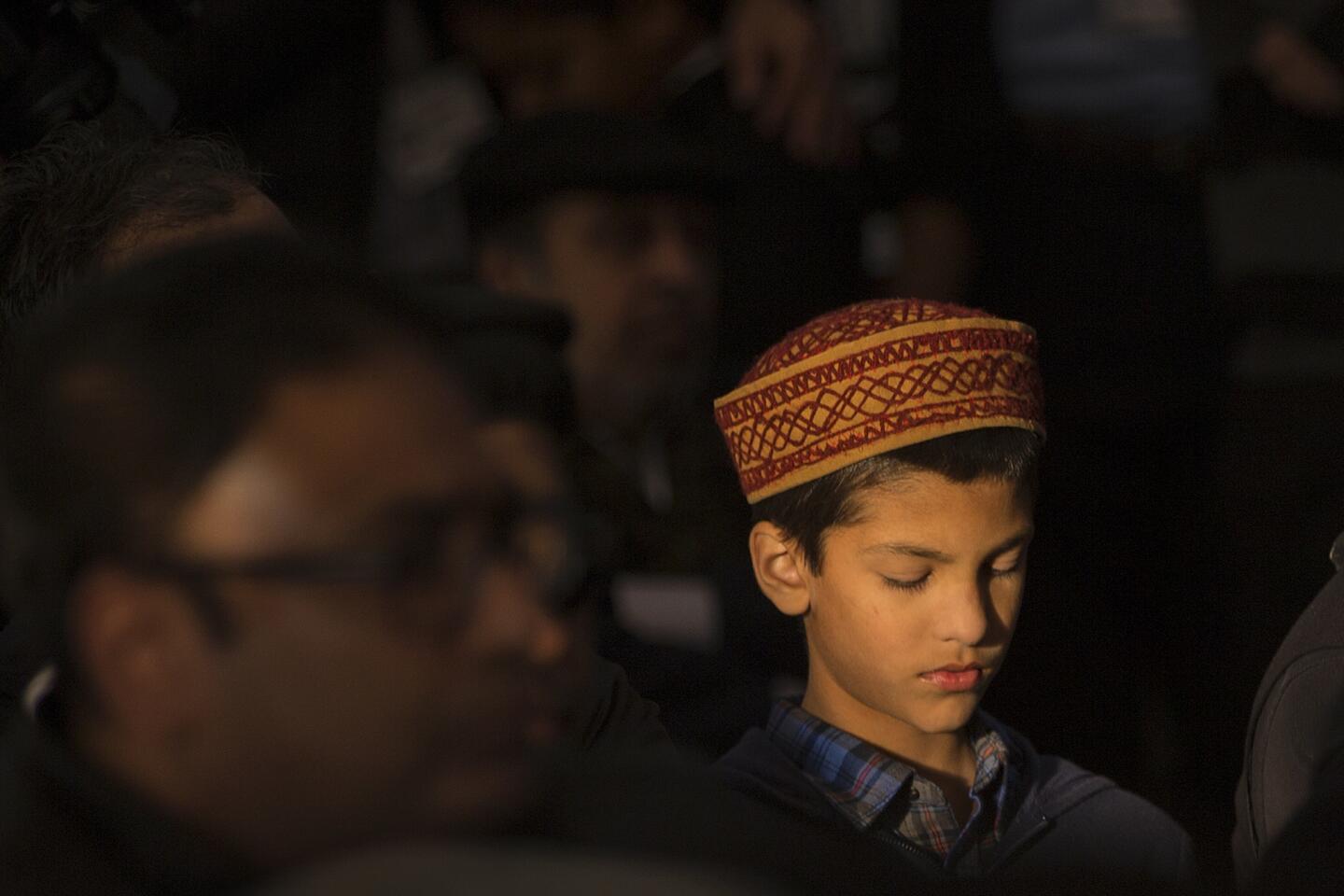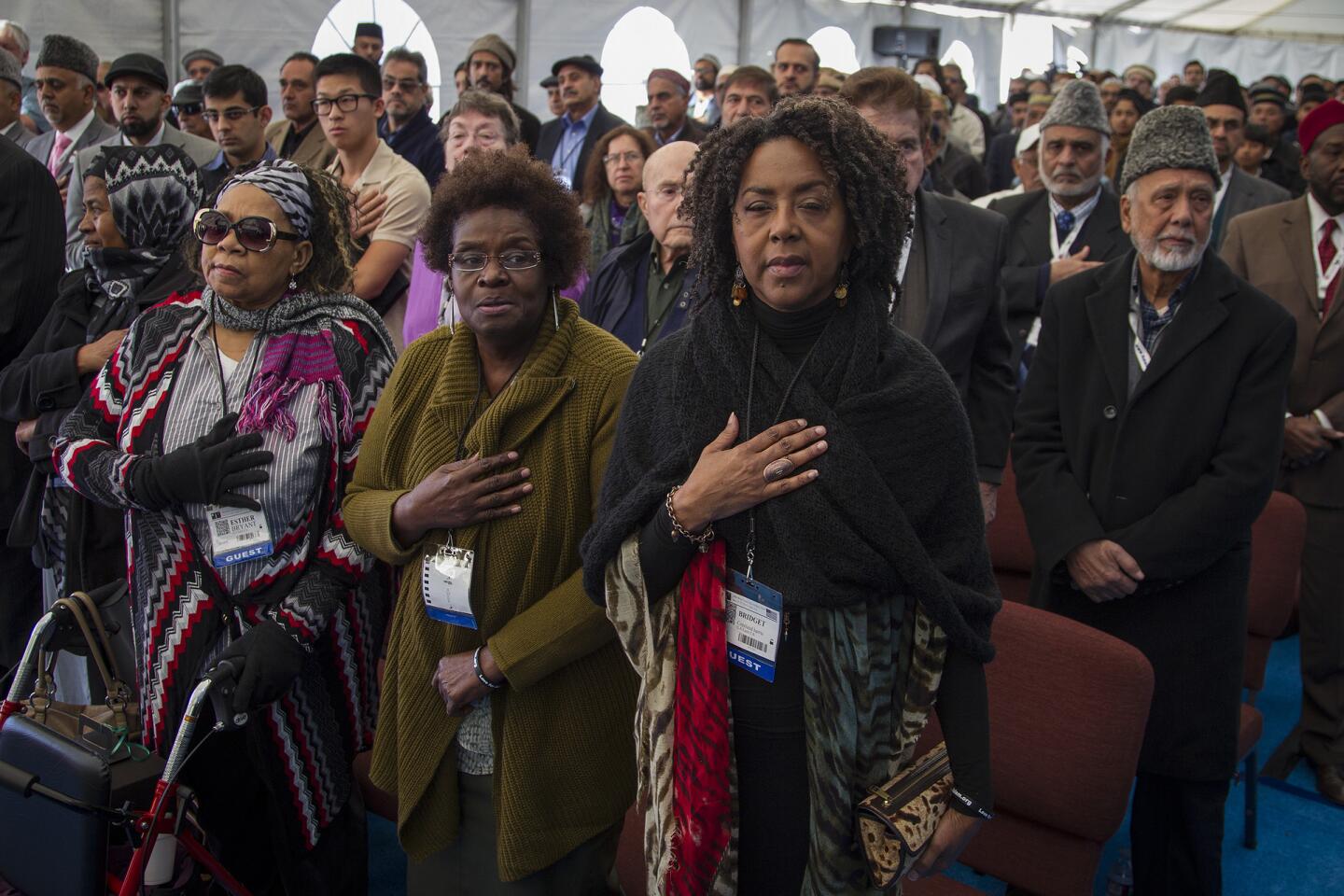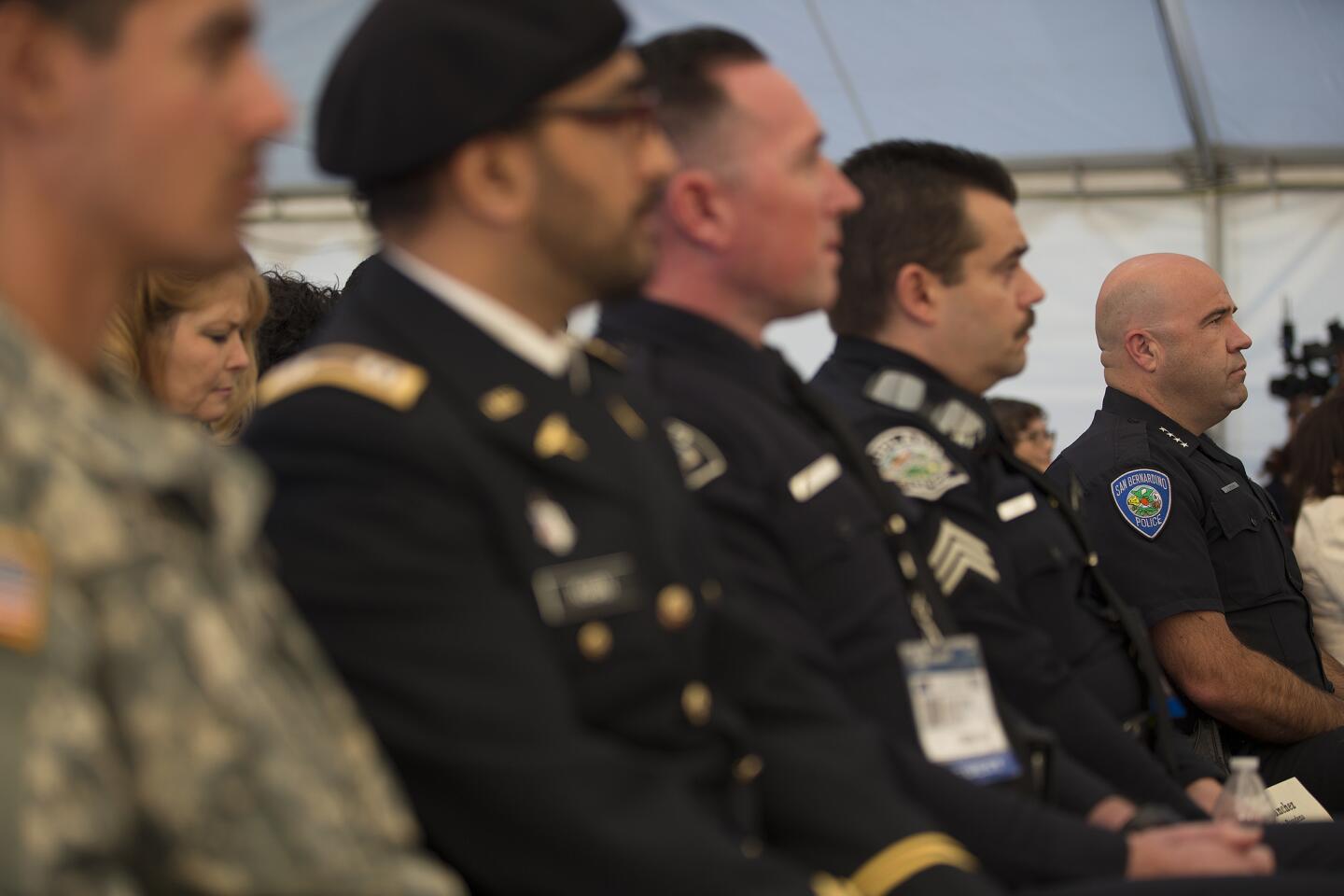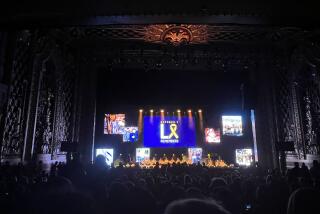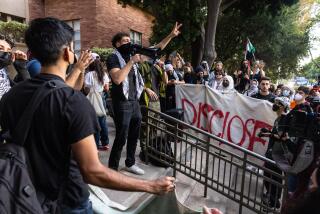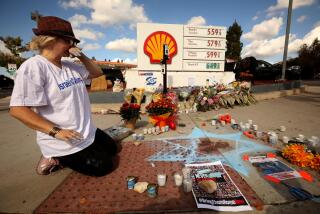San Bernardino shootings cast a somber tone over Muslim conference in Chino
- Share via
Every year around this time, people from across the western United States gather at the Bait ul Hameed Mosque in Chino to discuss and deepen their Ahmadiyya Muslim faith.
This year, the Jalsa Salana Convention, usually joyous, had a somber undertone.
A massacre had occurred a few weeks ago, just a short drive to the east, perpetrated by a husband and wife who, like many of them, had Pakistani surnames and a strong belief in Islam.
The couple, Syed Rizwan Farook and Tashfeen Malik, killed 14 people and wounded 22 at the Inland Regional Center in San Bernardino on Dec. 2 in the worst terrorist attack on American soil since Sept. 11.
Security has been stepped up at the mosque, a prominent landmark on Ramona Avenue. As a precaution, organizers canceled the conference’s evening sessions.
But Ahmadiyya Muslim leaders say they want to go beyond the usual warnings about Islamophobia. They want to send a message to fellow Muslims — to those who would become the next Farook and Malik.
The keynote speaker at the conference’s Saturday afternoon session spoke of the 11 principles of “True Islam,” which are designed to keep believers off the path of extremism.
The True Islam campaign was already in development, but Ahmadiyya leaders in the U.S. accelerated it after Dec. 2 and have sent information about it to 2,200 American mosques.
The first principle is to disavow all forms of terrorism, said the speaker, Harris Zafar, a spokesman for Ahmadiyya’s national organization.
Accepting that there is any justification for terrorism, as some religious leaders do, creates a slippery slope, he said.
Among the 11 principles are equality for women, respect for other religions and separation of church and state.
“As Muslims, we have to admit there is something wrong here. We have adherents whose words and actions are heinous,” Zafar said. “We have to seek to understand: What role did their faith play?”
Ahmadiyya Muslims believe that Mirza Ghulam Ahmad, who died in 1908, was the messiah.
In Pakistan, the government has banned the sect from referring to its halls of worship as “mosques.” That edict led to the construction of the Chino mosque in 1987 as a major center for Ahmadiyyas outside of Pakistan, according to a video shown at the conference.
Members of the mosque are still struggling with grief over the tragedy coupled with the “condemnation echo chamber” started by the actions of fellow Muslims, said Amjad Mahmood Khan, who attends the mosque and is director of public affairs for the national organization.
“This is still a very raw time for us,” Khan told the conference attendees.
Women at the mosque have discussed the dangers of wearing a head scarf after Malik’s role in the massacre. They decided to continue to wear the hijab as a declaration of their First Amendment rights and as a countering force to the militant group Islamic State, Khan said.
Join the conversation on Facebook >>
Rep. Norma Torres, (D-Pomona), was among the local political and religious leaders who spoke at the afternoon session.
“Our enemies will only triumph when we allow them to chip away at our American values by fear-mongering about events beyond our control,” Torres said.
San Bernardino Police Chief Jarrod Burguan, who became a public face of the tragedy by leading frequent news conferences, said the events of Dec. 2 were not the final chapter.
“It’s the opportunity to come together, to understand one another better, to not let hate, to not let the bad things in this world dictate what this is about, but that the story can be about us coming together and being stronger when this is all said and done,” Burguan said.
Twitter: @cindychangLA
ALSO
Even for the active, a long sit shortens life and erodes health
UCLA turned into corn meal by Nebraska in Foster Farms Bowl
1,200-acre brush fire north of Ventura is 60% contained; evacuation orders lifted
More to Read
Sign up for Essential California
The most important California stories and recommendations in your inbox every morning.
You may occasionally receive promotional content from the Los Angeles Times.
